Survey at a Glance:
- 99.75% of UK consumers read reviews at least sometimes when shopping online; nearly 89% do so regularly or always.
- 65% of shoppers in the UK read reviews about purchases they’re making in a physical store.
- 98% of UK consumers view reviews an essential resource when making purchase decisions.
- Reviews are the top factor impacting purchase decisions for shoppers in the UK, ranking above other factors including price and recommendations from family and friends.
- 69% of shoppers in the UK seek out websites with reviews. This number is even higher — 73% — among Millennials.
- Consumers most commonly read reviews on sites including Amazon.co.uk (88%), retail websites (85%), search engines (67%), and brand websites (58%).
- 75% of consumers consider the average star rating when reading reviews; however, 53% don’t trust star ratings alone as much as they do star ratings accompanied by written reviews.
- Three-quarters of shoppers consider how recently reviews were written. And they have high expectations when it comes to recency. Just over 70% want to access reviews written within the last month.
- 73% of shoppers consider the quantity of reviews available. The largest portion of shoppers (38%) read between six and 10 reviews. However, 62% say that in an ideal world, they’d be able to find at least 26 reviews for a given product.
- 95% of consumers in the UK seek out negative reviews. Reading negative reviews doesn’t guarantee a shopper will pass up a product. In fact, our previous research found that there’s actually a 120.3% lift in conversion when site visitors filter to see only one-star reviews on a product page.
- Nearly half (45%) of consumers are suspicious of products with an average star rating of five out of five. This number is even higher — 52% — among Boomer shoppers.
Contents

Introduction
Reviews Have Never Been More Important to Consumers
Regardless of what they’re shopping for, consumers have seemingly endless options. And thanks to the internet, they have easy access to plenty of information to aid their decision-making.
Of course, brand-provided information, such as product descriptions, specs and photos are valuable. But shoppers also want to hear about the experiences of others like them.
In the past, consumers would seek out such feedback by asking family members and friends. Of course, traditional word of mouth is still alive and well. However, increasingly, consumers seek out feedback from others by reading reviews. Our most recent research found that nearly all shoppers in the UK consult reviews when shopping online. What’s more, 98% of UK consumers consider this content to be essential. Clearly, reviews are no longer “nice to have.” They’re a must-have.
Reviews are an Essential Component of a Successful Ecommerce Strategy
By now, most brands and retailers recognise the tremendous value consumers place on reviews. As such, they’ve made it a priority to collect and display this content.
Businesses that incorporate reviews into their overall ecommerce strategy are rewarded. Product pages with reviews attract a higher volume of visitors. And a larger portion of visitors convert. A recent analysis found that conversion rates more than double when shoppers interact with ratings and reviews on a product page.
On the flip side, brands and retailers that fail to provide consumers with the reviews they seek out are sure to lose customers. As you’ll read in this report, nearly half of UK consumers simply won’t buy a product if there aren’t any ratings or reviews for it.
Now’s the Time to Leverage Reviews to Drive Revenue Growth
Brands and retailers must effectively leverage reviews if they expect to attract and convert customers in an increasingly competitive landscape. But in order to build effective strategies, businesses must first take a step back to understand shopper expectations when it comes to reviews.
PowerReviews surveyed more than 6,000 UK consumers to understand how consumers use reviews when shopping online and in-store — and how the presence or absence of this content impacts where consumers shop and what they buy. This report explores the findings from this survey and provides recommendations for brands and retailers seeking to maximise the impact of ratings and reviews.

Who We Surveyed
Generations
(1997-present)

(1981-1996)

(1965-1980)

(1946-1964)

Household Income
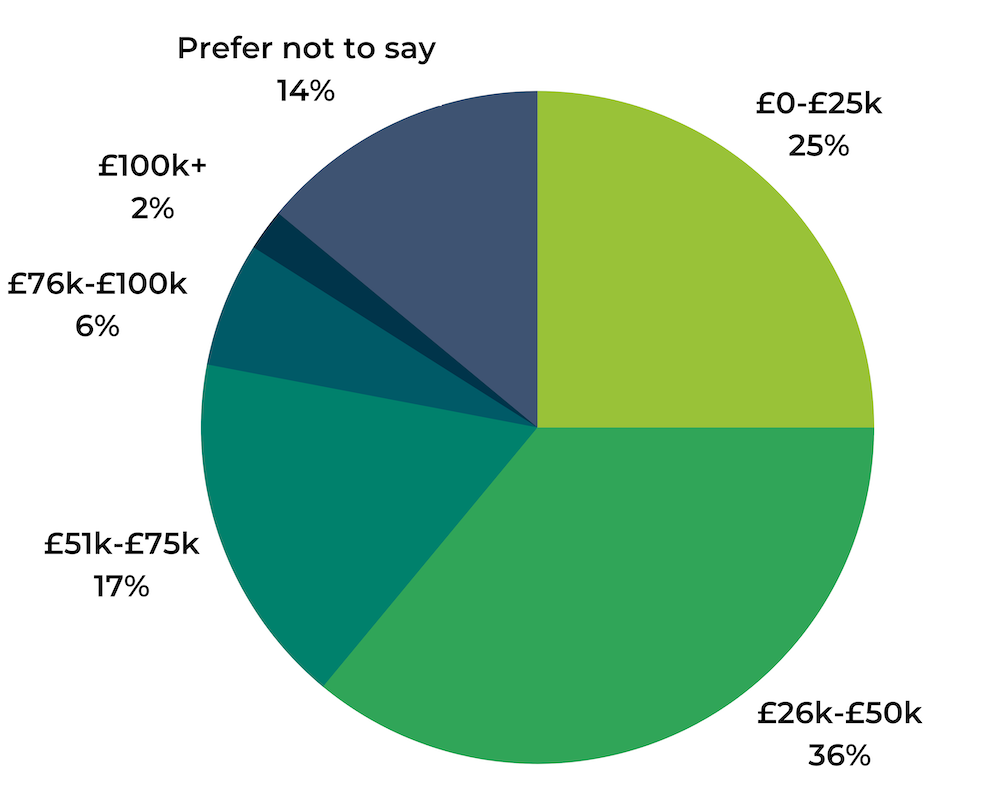

The Growing Importance of Reviews
The idea of consumers seeking out feedback from others prior to making a purchase decision isn’t exactly a new concept. For example, a consumer might ask for feedback from family and friends before choosing a hotel for their next vacation or purchasing a new washing machine.
But now, more than ever, consumers access feedback from others by reading reviews.
The Vast Majority of Consumers Read Reviews When Shopping Online
Over the last decade, eCommerce has experienced steady growth. The COVID-19 pandemic further fueled that growth.
Today, a large (and growing) number of consumers enjoy the benefits of online shopping. However, shopping online does come with a certain level of risk. Namely, consumers can’t touch and see a product in person before committing to a purchase.
To bridge the gap, consumers seek out as much information as they can before making an online purchase. One way they do this is by consulting reviews. In fact, nearly all (99.75% to be exact) of consumers in the UK indicate they read product reviews when shopping online at least sometimes.
And many consumers consult reviews far more regularly. Nearly 89% of consumers read reviews regularly or always when shopping online.
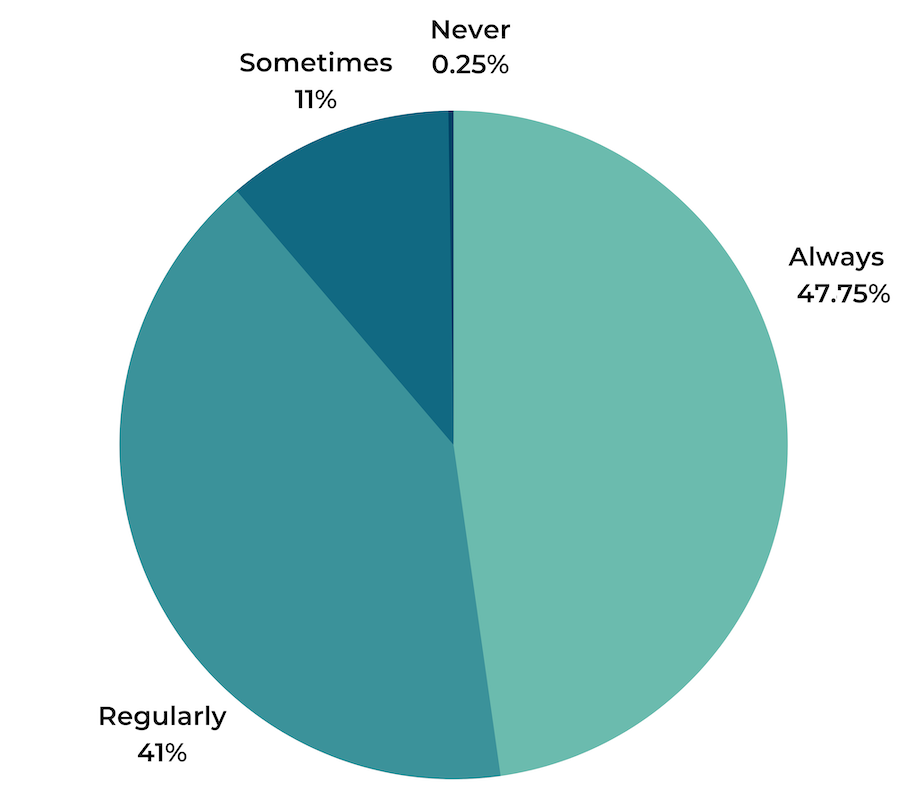
Shoppers Consult Reviews in Brick-and-Mortar Shops
Reviews are a valuable tool for online shoppers. But a growing number of shoppers also consult reviews when they’re shopping within the four walls of a brick-and-mortar shop.
In fact, 65% of shoppers in the UK indicate they read reviews about purchases they make in a physical shop or store.
Interestingly, Millennials are the generation most likely to consult reviews in-store. 66% do so, compared to 60% of Boomers.
But make no mistake: a large portion of shoppers across all generations depend on reviews when shopping in physical store locations. The onus is on brands and retailers to ensure this content is easy for consumers to access, whether they’re shopping online or within the four walls of a store.
Reviews are Essential
There was once a time when reviews were considered novel. But they’ve quickly become a key part of the purchase journey for just about all shoppers.
Today, 98% of consumers agree that reviews are an essential resource when making purchase decisions. Over half (55%) strongly agree with this sentiment.
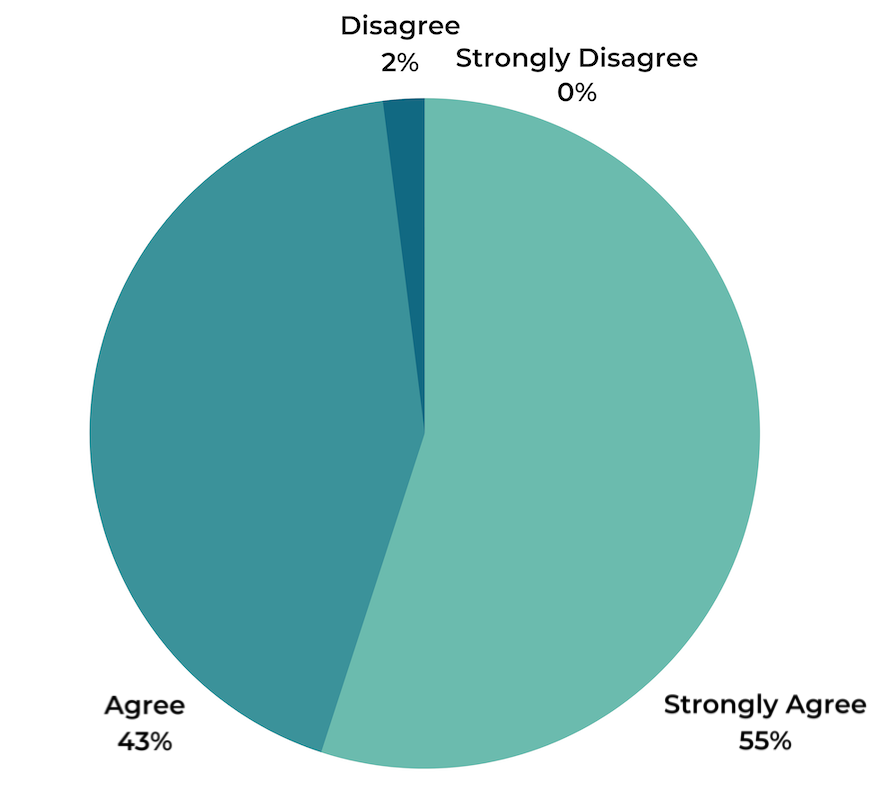

How Reviews Influence Where Consumers Browse and Buy Products
A staggering 98% of UK consumers consider reviews to be essential. So it’s probably not surprising that the presence (or absence) of reviews has a large impact on where online shoppers browse and ultimately, buy.
Consumers Seek out Websites with Ratings and Reviews
Consumers want websites to provide all of the information they need to make informed purchase decisions. That includes plenty of reviews for plenty of products. In fact, 69% of consumers actively seek out websites with ratings and reviews.
Notably, Millennials are the generation most likely to seek out websites with reviews; nearly a quarter (73%) do so. In comparison, 66% of Boomers, 67% of Gen X’ers, and 67% of Gen Z shoppers say this is the case.
Consumers in the UK Read Reviews on Various Websites
Sure, 69% of consumers in the UK actively seek out websites with reviews. But where exactly are they consuming reviews?
It probably shocks no one that Amazon tops the list; 88% of consumers indicate they read reviews on Amazon.co.uk. However, retail websites, such as JohnLewis.com and Boots.com (among others) are an extremely close second. 85% of consumers read reviews on these and other retail websites. Brands can also take comfort in the fact that over half (58%) of consumers read reviews directly on the website of the brand that manufactures the given product — for example, Nike.com or Apple.com.
Shoppers consume reviews on a number of different online destinations. Brands must ensure consumers can always find reviews for their products — wherever they choose to purchase them.
Many Consumers Visit Brand Websites
A large portion of consumers read reviews on Amazon and retailer sites. However, that doesn’t mean brands should depriotise their own websites.
When deciding whether to purchase a product online, nearly all consumers (97%) visit the brand site directly, in addition to retail websites, at least sometimes. 66% do so always or regularly.
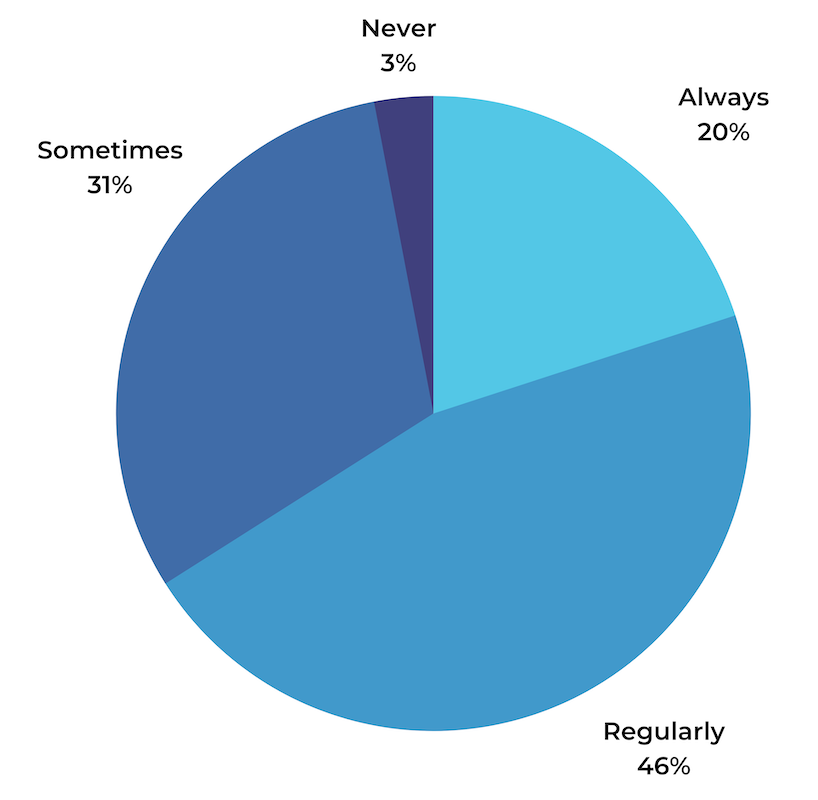
And, as previously noted, 58% of consumers read reviews on brand websites.
Brands must ensure they’re delivering great ecommerce experiences via their own dot com. A big part of this is ensuring consumers have easy access to all of the information they need to make informed decisions — including ratings and reviews.

How Reviews Impact Purchase Behaviour
Just about all consumers seek out reviews. But how exactly does the presence (or absence) of this content impact purchase behaviour?
Reviews Have Become the Top Purchasing Consideration
Consumers weigh a variety of factors when determining which products to purchase (and which to avoid). But our most recent research found that ratings and reviews surpass all other factors in terms of importance. In fact, ratings and reviews have an even larger impact on purchase decisions than the price of the product — or recommendations from family and friends!
A Lack of Reviews is Enough to Deter Many Shoppers
Consumers actively seek out reviews — regardless of what they’re shopping for. And if they’re not able to find the content they seek, many will abandon the purchase.
Nearly half (46%) of consumers in the UK indicate they won’t buy a product if there are no ratings or reviews available for it.
Younger shoppers are more likely to steer clear of products without reviews than their older counterparts. 54% of Gen Z shoppers and 48% of Millennials won’t buy products that don’t have reviews, compared to 45% of Gen X’ers and 39% of Boomers.
It’s true that over half of shoppers will still purchase a product even if there aren’t reviews for it. However, it’s important to note that the presence of reviews is proven to significantly boost sales. Our own analysis found that there’s a 120.3% lift in conversion when shoppers interact with ratings and reviews on a given product page.
A Solid Reputation Can Help Shoppers Overcome Their Doubts about Products Without Reviews
We know that a good portion of shoppers will avoid products that don’t have reviews. But interestingly, 56% said they’d be more likely to buy a product that didn’t have any reviews if other products manufactured by the same brand had a high overall average rating.
An even larger portion of Gen Z shoppers — 72% — indicate that they’d be more likely to buy a product lacking reviews if other products from the same brand had great overall ratings.
Obviously, brands should focus on generating reviews across the entire product catalog. However, it is encouraging that a great online reputation can boost trust and shopper confidence — even if you don’t have any reviews for the specific product the consumer is considering.

When Reviews are Most Impactful
We know that just about all consumers turn to reviews when they’re shopping online — and 65% do so when shopping in brick-and-mortar shops. But are there certain circumstances when reviews are especially important?
Reviews Matter for Expensive Products
There’s a certain amount of risk associated with purchasing a product sight unseen. This is especially true when the product comes with a higher-than-average price tag. No one wants to purchase an expensive product — and then be disappointed when it arrives!
For many shoppers, reading reviews helps reduce the risk associated with purchasing an expensive product. Nearly three-quarters (74%) of consumers indicate that the more expensive the product, the more they read reviews.
Younger shoppers are much more likely to read more reviews for expensive products; 94% of Gen Z shoppers do so. In comparison, far fewer Boomers — 60% — agree that the more expensive the product, the more they read reviews. A possible explanation for this is that younger shoppers — specifically those who identify as Gen Z — haven’t been in the workforce as long as their older counterparts and thus have less disposable income. Therefore, they scrutinise expensive items more.
Income also seems to have a bearing on whether someone reads more reviews for expensive products…but perhaps not in the way one might think. The higher a consumer’s income, the more likely they are to agree that the more expensive the product, the more they read reviews.
Consumers across all generations and income brackets depend on reviews even more when they’re considering an expensive item. So make it a priority to collect plenty of reviews for the items in your product catalog that are higher priced.
Consumers Consult Reviews for Various Product Categories
Modern shoppers depend on reviews. But are there any product categories for which they find reviews particularly helpful?
Electronics is the top category; 97% of consumers find reviews to be helpful when purchasing products in this category. Appliances come in at a close second at 90%. This makes sense, as products in these categories are typically higher priced — which aligns with our finding that reviews are especially important for more expensive items.
Consumers also find reviews to be helpful when purchasing products across a variety of other categories, including health & beauty (70%), computers (69%), home & garden (68%), clothing (66%), shoes (49%), toys (45%), groceries (35%) and baby (24%). It’s important to note that the baby category is lowest, likely because items in this category are purchased by a specific group of consumers — parents — rather than the general population.
Consumers value reviews across a wide array of product categories. Make it a priority to collect reviews — regardless of the types of products you sell.

The Review Elements that Matter Most to Consumers
By now, it’s clear that reviews play an essential role in the purchase journey — whether a consumer is shopping online or in a brick-and-mortar shop. But there are many things to consider when reading reviews, such as star rating, recency and quantity, among others. Which of these elements matter most to consumers?
Consumers Consider Many Review Elements
Shoppers consider many factors when they’re reading reviews. The average rating and the recency of review content are tied for the top spot. 75% of consumers consider each of these elements when reading reviews. The quantity of reviews is a close second; 73% of consumers consider how many reviews there are for a given product.
Other less popular, but still significant elements, include the length, depth and detail of the review content (51%) and the grammar and spelling within the review content (26%).
Let’s dig deeper into a few of these top considerations.
Star Ratings Alone Aren’t Enough
Three-quarters of consumers consider the average star rating of a product when reading reviews. That’s probably not surprising. The star rating provides a great high level overview of the satisfaction of those who have already purchased the product.
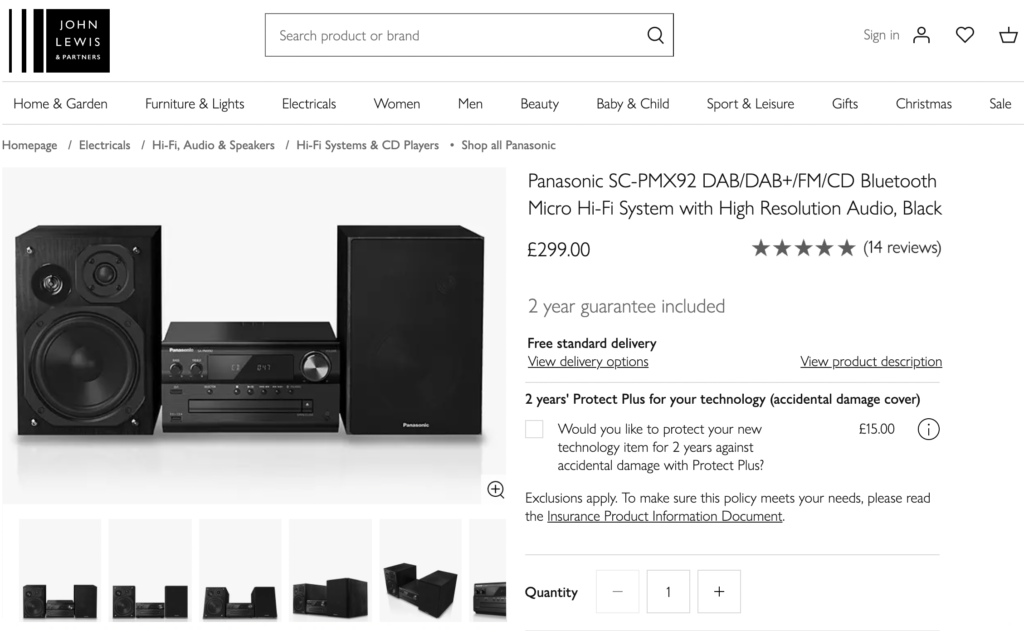
Some websites, including Amazon, allow shoppers to leave a star rating for products they’ve purchased — without an accompanying written review.
There’s no doubt this helps the retailer generate a high volume of reviews quickly. However, many consumers don’t trust a star rating alone as much as they do a star rating accompanied by a written review to provide context for why the rating was assigned. In fact, 53% of consumers don’t trust a star rating as much as they do a star rating with a written review.
The older the consumer, the more likely they are to trust ratings less than ratings accompanied by reviews. 60% of Boomers and 54% of Gen X’ers feel this way, compared to 51% of Millennials and 49% of Gen Z’ers.
Star ratings matter. But a large portion of consumers also want written reviews. By collecting reviews alongside ratings, you’re fostering trust with shoppers — and helping them make the best purchase decisions.
Shoppers Expect Recently Written Reviews
Recency is one of the top factors consumers consider when reading reviews. And they have high expectations.
Just over 70% of consumers want to find reviews posted within the last month. And over a quarter (28.5%) want to be able to find reviews written within the last seven days.
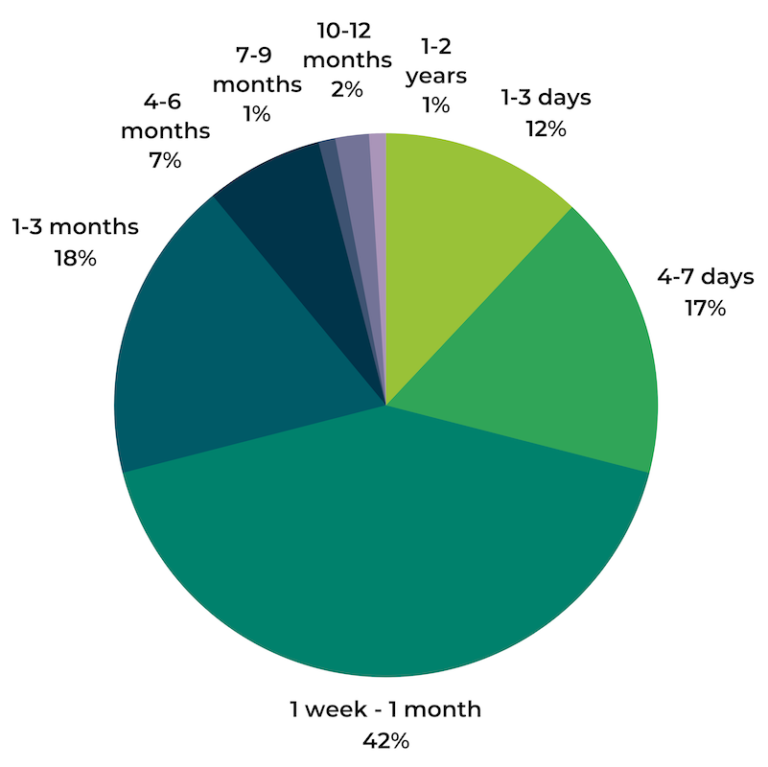
Consumers pay attention to how recently a review was written. And old reviews may carry less weight than newer ones. As such, brands and retailers must focus on generating a steady stream of reviews so shoppers can always find fresh, relevant reviews for the products they’re considering.
Review Quantity Matters
Nearly three-quarters (73%) of consumers consider the quantity of reviews when reading this content prior to making a purchase. But how many reviews is enough?
The largest portion of shoppers — 38% read between six and 10 reviews, and 28% read between 11 and 25. 16% read 26 reviews or more, and just over 17% are satisfied with just 1-5 reviews.
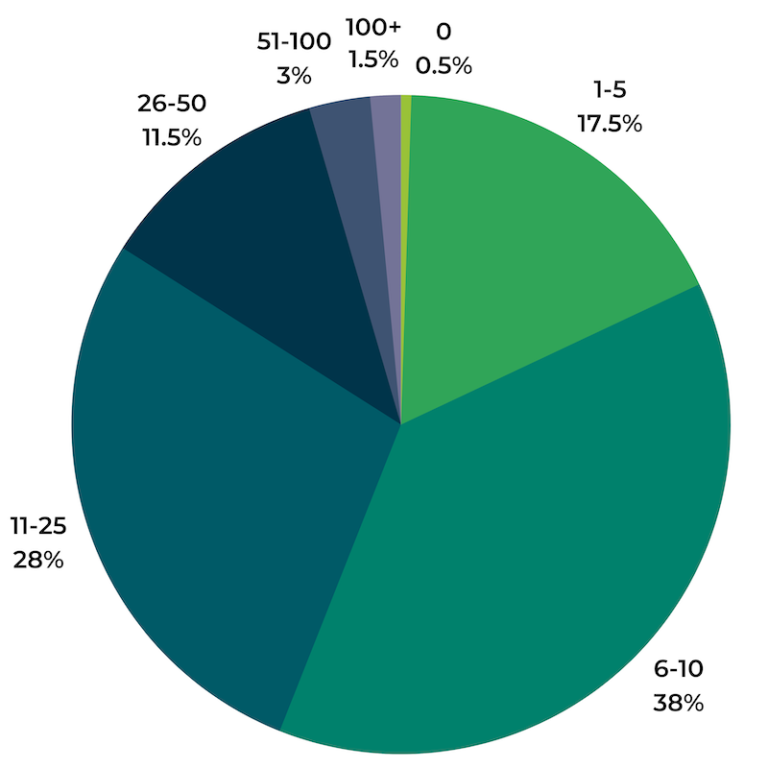
Of course, it’s important to remember that the number of reviews a consumer reads likely varies greatly based on the product they’re purchasing. For example, as we noted earlier, 74% of consumers read more reviews when a product is more expensive. So it’s safe to say a consumer would read more reviews when purchasing a big ticket item like a refrigerator, than they would when considering a new kind of soft drink.
Shoppers Want to Access a Large Volume of Reviews -- But They’ll Settle for Fewer Than Ideal
While the greatest portion of shoppers reads between six and 10 reviews for a given product, they ideally want to find a lot more content. In fact, 62% ideally want to find at least 26 reviews for a product. And nearly a quarter (24%) feel that ideally, a product should have more than 100 reviews!
Why do shoppers want access to so many reviews — when they typically read far fewer? Likely because when there’s a large volume of reviews, it’s easier to find content relevant to their unique needs.
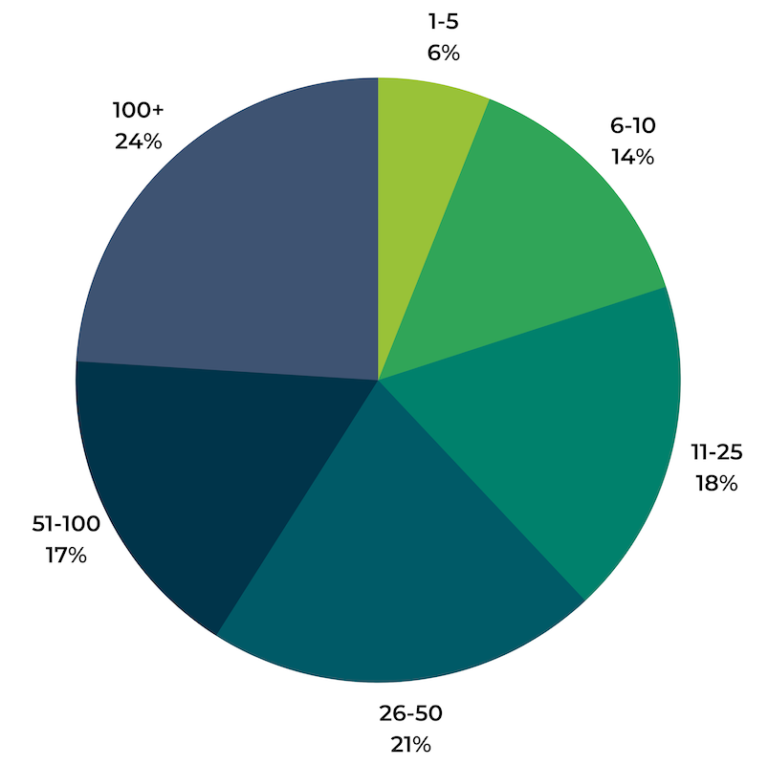
Ideally, consumers want to find quite a large volume of reviews for the products they’re considering. However, many feel they can make confident purchase decisions with fewer than the ideal number of reviews.
The greatest portion of shoppers (29%) indicate that a product must have between six and 10 reviews in order for them to feel comfortable purchasing it. 19% need to be able to find 11-25 reviews and 18% indicate they’d be comfortable with between one and five reviews. Nearly a third (32%) indicate that a product must have at least 26 reviews before they’d feel comfortable purchasing it.
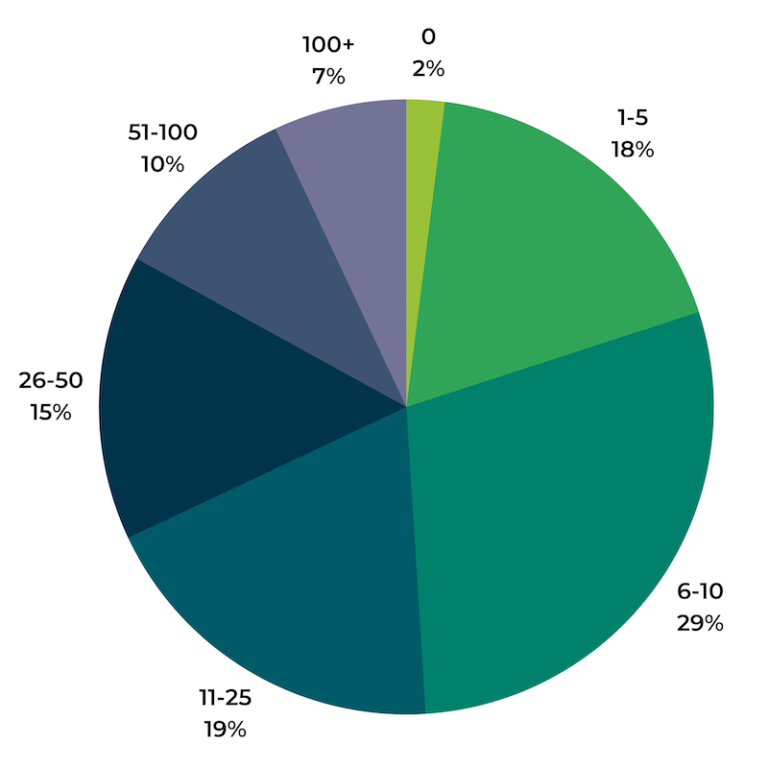

The Important Role of Negative Reviews
No brand or retailer strives for negative reviews. But the good news is, the occasional negative review isn’t the end of your business. In fact, negative reviews are an important tool shoppers depend on to find products that best fit their needs. And the absence of negative reviews raises a red flag for shoppers.
Consumers Look for Negative Reviews
The vast majority (95%) of consumers specifically seek out negative reviews at least sometimes. And many look for this content far more frequently. 30% always look for negative reviews, and a third (33%) seek out this content regularly.
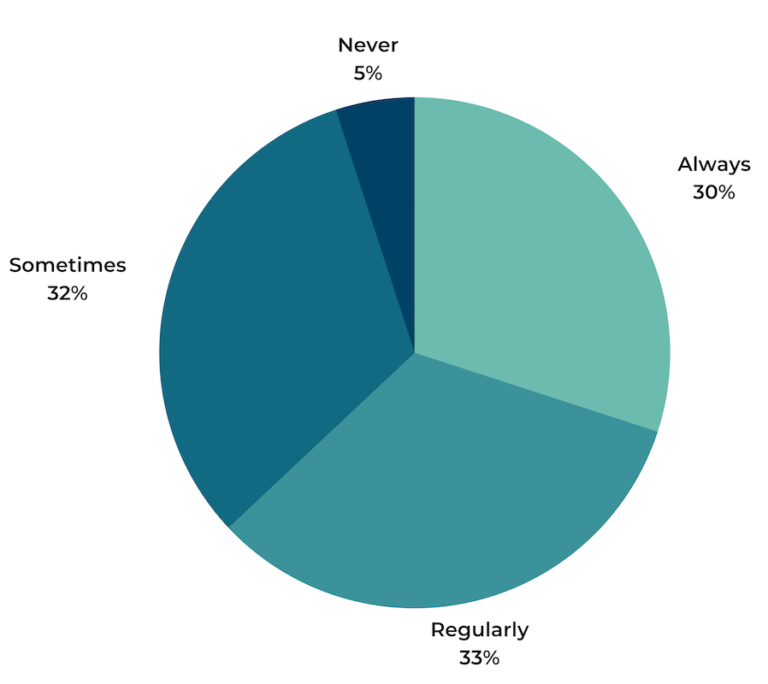
Gen Z shoppers are the generation most likely to always seek out negative reviews. 33% say they do so, compared to just over a quarter (27%) of Boomers.
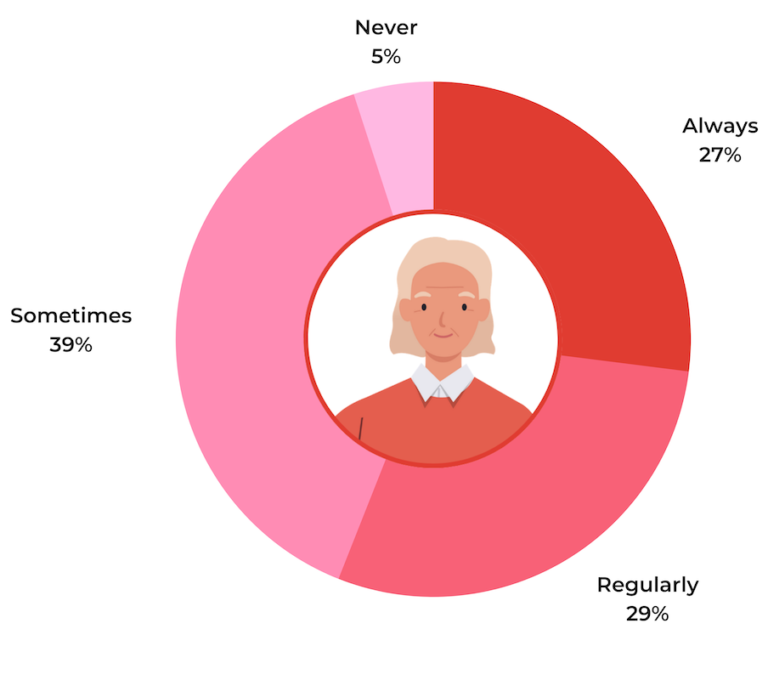
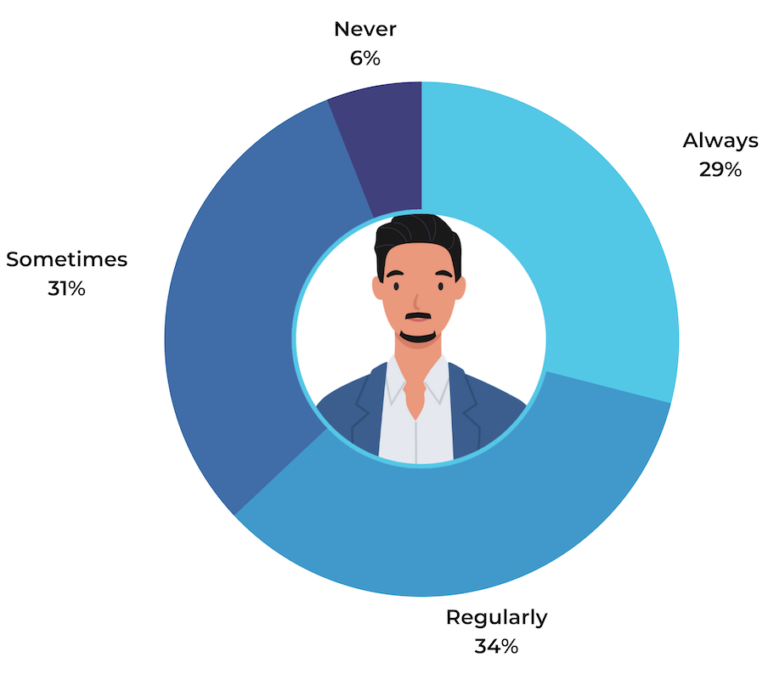
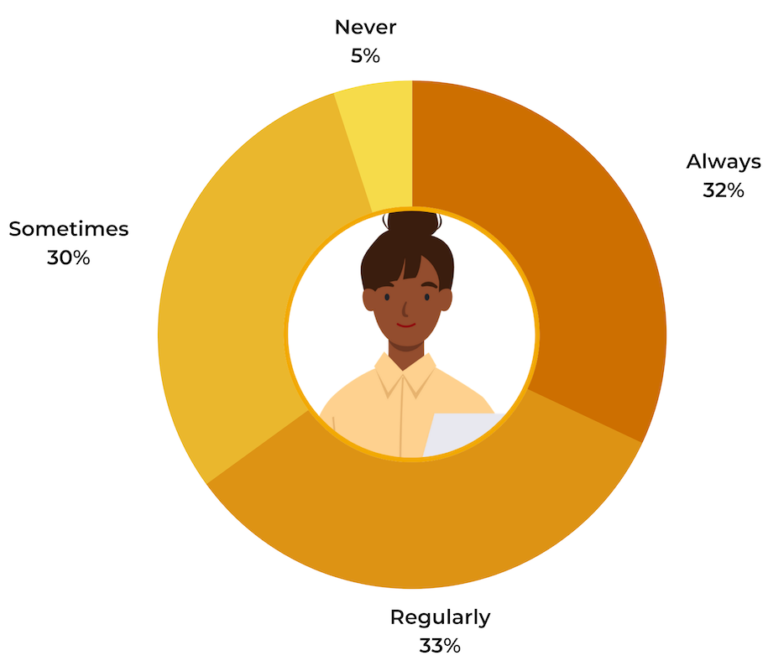
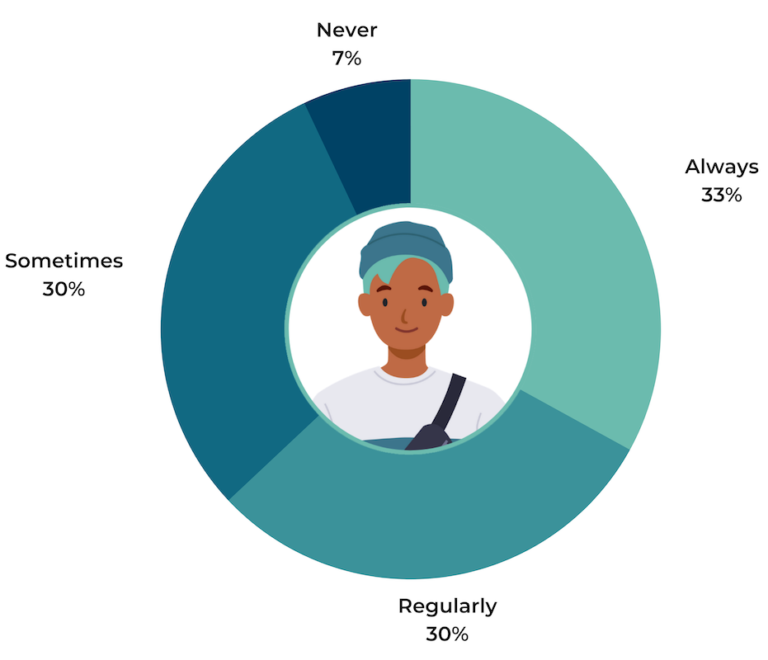
Resist the urge to delete negative reviews. Consumers depend on this content to determine the worst case scenario of a product — and whether it’s something they can live with.
What’s more, negative reviews won’t necessarily deter shoppers from purchasing a product. In fact, our recent analysis of the impact of myriad UGC features found that many site visitors specifically filter to read one-star reviews. And those who do convert at a rate 108.8% higher than the average page visitor!
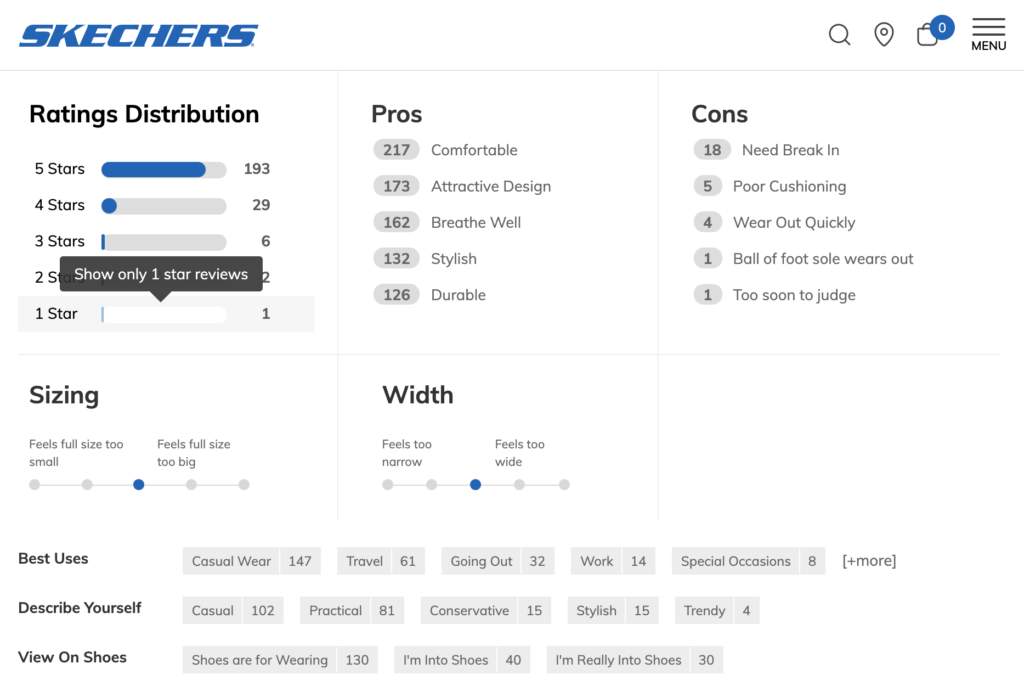
Shoppers Distrust Products with Perfect Ratings
Consumers know that even the best products can’t be all things to all people. So if a product only has glowing reviews, it can raise suspicions.
Nearly half (45%) of shoppers in the UK say that they are suspicious of products with a perfect average rating of five out of five stars.
Boomers are the group most likely to be suspicious of products with a perfect rating; 52% say this is the case, compared to 44% of Millennials.
Consumers of all ages perceive perfect star ratings as too good to be true. On the other hand, businesses that display negative reviews show shoppers they’re a trustworthy brand that has nothing to hide.

6 Tips for Leveraging Reviews to Grow Online and Offline Sales
Reviews are a key part of the purchase journey. Today, nearly 100% of consumers in the UK consult reviews when shopping online — and 65% do so when shopping in a brick-and-mortar shop. There’s never been a more important time for brands and retailers to collect and display reviews. By doing so, these businesses will be better positioned to attract and convert shoppers. After all, there’s a 120.3% lift in conversion when site visitors interact with reviews.
Read on for our six recommendations for leveraging ratings and reviews to the fullest, based on the findings of this report.
A staggering 98% of UK consumers consider reviews to be an essential resource when making purchase decisions. And nearly half simply won’t purchase a product if there aren’t any reviews for it.
So start collecting more reviews. The best way to do this is to send post purchase emails or SMS messages (or both) to your customers, asking them to submit reviews. Make sure the entire process for submitting a review is quick and can easily be completed on a mobile device. And make it easy for shoppers to leave reviews for multiple products on a single page, as many transactions include multiple items.
Also, remember that while quantity matters, so too does recency. Consider doing an audit to identify products that have mostly older reviews. And then focus on generating fresh content for these products.
69% of shoppers in the UK say they specifically seek out websites with reviews. So make sure this content is easy to find and consume on your ecommerce site — whether your customers are browsing on their laptop at home or their mobile device while in the store. At a minimum, display the average star rating and review count “above the fold” on product pages. And be sure to include features in the full review display that allow shoppers to sort, filter and search to find the content that’s most relevant to them.
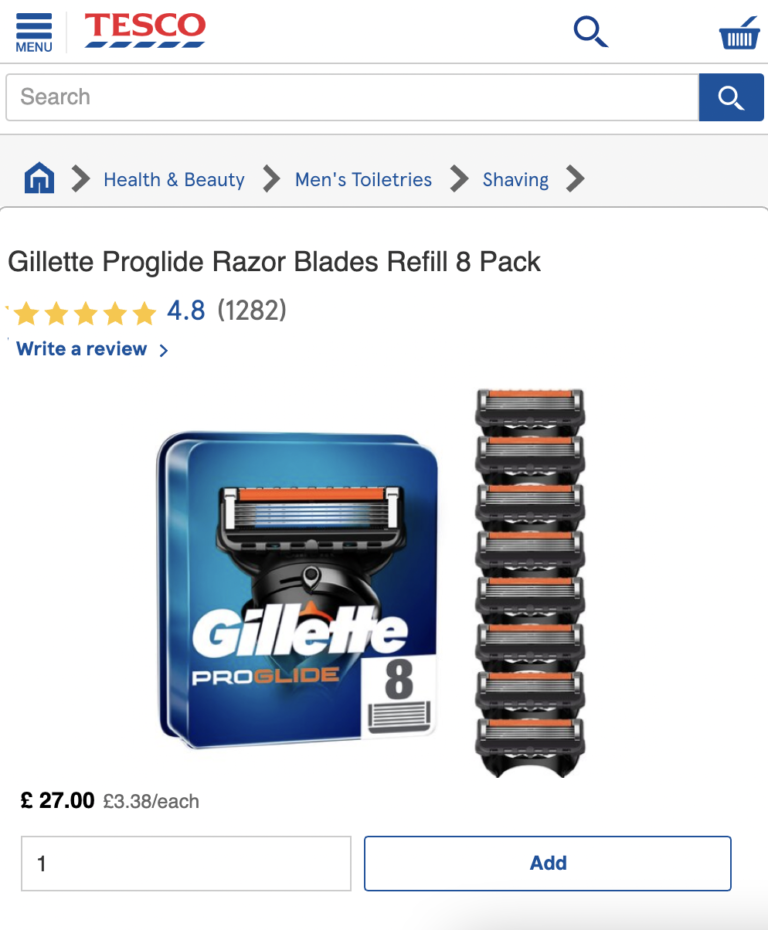
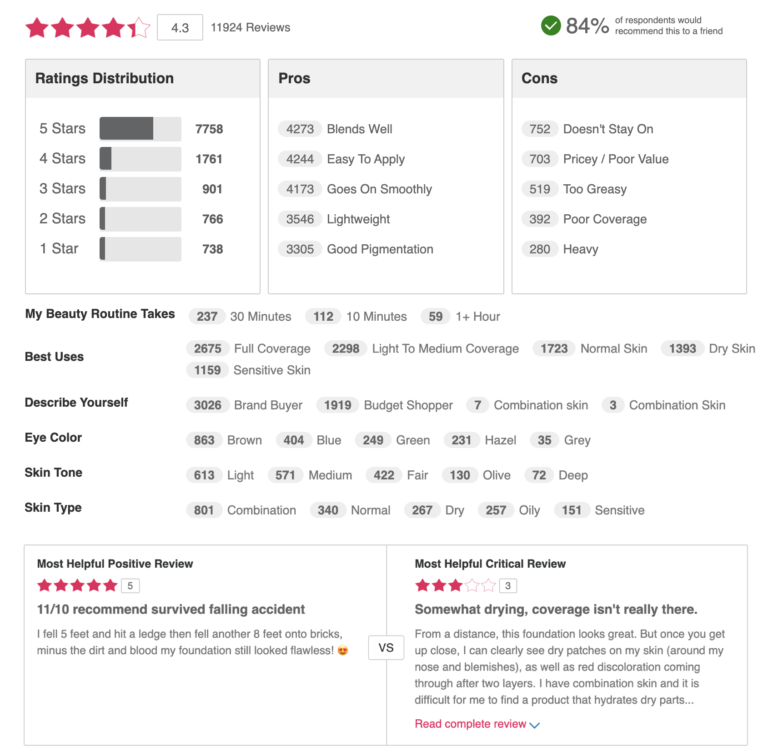
88% of consumers read reviews on Amazon.co.uk and 85% do so on retail websites. If you’re a brand, it’s important that shoppers are able to find plenty of review content — wherever they ultimately end up purchasing your products. Ask your ratings and reviews supplier if there’s a way for you to share the reviews collected on your own website with your top retail partners, as well as Amazon.
Getting a negative review is never the goal. But the occasional negative review isn’t the end of the world. In fact, there’s a positive side to negative reviews.
95% of consumers seek out negative reviews. By displaying negative reviews, you’re meeting their needs — and making it easier for them to identify the products that’ll work best for them. And the good news is, those who filter to see only one-star reviews actually convert at a rate that’s 120.3% greater than the typical website visitor.
Also, displaying negative reviews let’s shoppers know you have nothing to hide — and therefore, are a brand they can trust. After all, almost half of UK shoppers indicate they’re suspicious when a product has a perfect average star rating of 5.0.
Creating a beautiful, on-brand review display is for naught if it doesn’t have a positive impact on sales. Instead, focus on creating a review display that drives results.
This shouldn’t be a case of “one and done.” Instead, measure the performance of your review displays on an ongoing basis. And use your findings to consistently make impactful optimisations. Ask your ratings and reviews provider what tools they offer to help you measure performance and make data-based optimisations.

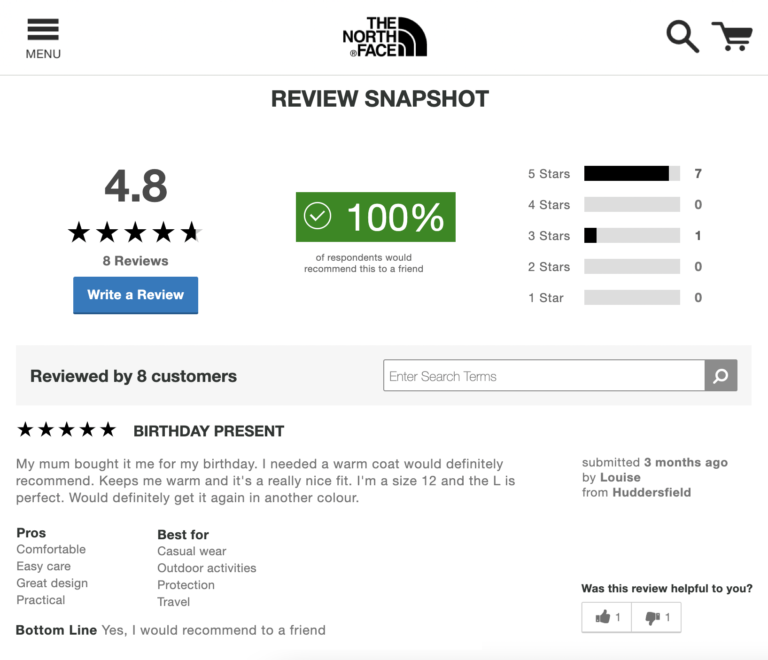
Reviews (especially those pesky negative ones) are a great source of insight into what shoppers love (and don’t love) about your products. Be sure to analyse your reviews on a regular basis to shed light on opportunities to improve your products and experiences.
Ask your ratings and reviews partner what analytics capabilities are available to you to identify insights from reviews — and then take action on them.


